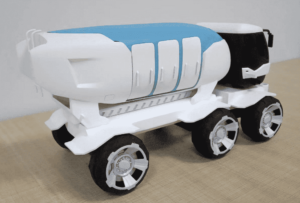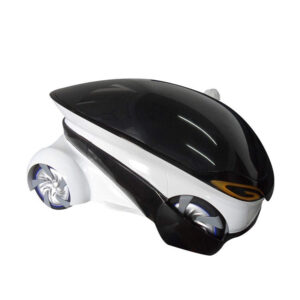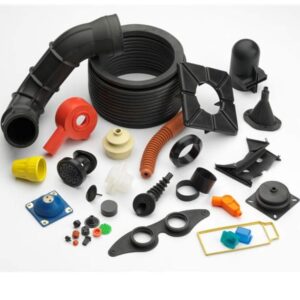
- Less material consumption: 3D printing allows automakers to use only necessary materials to produce parts, thereby reducing waste, energy consumption and equipment emissions during the production process. Traditional manufacturing technologies such as casting and machining require more materials, resulting in a waste of materials and energy. 3D printing not only reduces waste, but also helps reduce environmental pollution. In addition, the materials used in 3D printing are often recyclable and the processes used are more sustainable.
- Environmentally friendly material selection: The polymer materials used by car manufacturers are more environmentally friendly. Because it’s made from sustainable resources like recycled plastic, cornstarch and soy. These materials are ideal alternatives to traditional petroleum-based polymers that are difficult to recycle and often end up in landfills. By using environmentally friendly materials, automakers reduce their carbon footprint and help create a more sustainable environment.
- Reduce logistics and transportation: Automakers have always relied on global supply chains, and a large amount of carbon footprint will be generated during logistics and transportation. Nowadays, using 3D printing technology, manufacturers can complete the production of parts within the company. This will significantly reduce carbon emissions from transportation while also saving transportation costs.
(Example: General Motors chose to use an F900™ printer and FDM™ ASA thermoplastic material for 3D printing instead of original aluminum billet processing. This can provide a lighter material, shorter delivery time but better stiffness and strength, especially if the need is determined Faster iteration capabilities can be demonstrated when improving the design of tools. 3D printing quickly produces spare parts and eliminates the need for special welding and maintenance of aluminum risers. 3D printing not only brings sustainable benefits to the digital supply chain, but also meets meet the needs of many customers.)
4. Prototyping before mass production: Another significant advantage of 3D printing is that it speeds up prototyping and testing. It enables designers and engineers to create prototypes for detecting errors and optimizing designs before final production. The parts produced are directly matched to the final product and can be used immediately, which significantly saves time, money and resources. The ability to produce and test prototypes in just days instead of weeks or months helps automakers significantly reduce their carbon footprint.Towards a sustainable automotive industry.
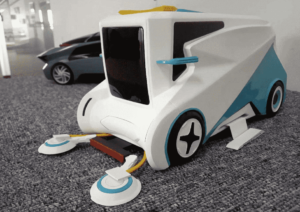
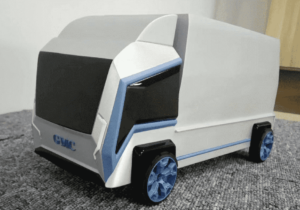
Advantages of 3D printing for manufacturing auto parts
The automotive industry is gradually moving towards sustainable development, and 3D printing plays a key role in this. Relying on 3D printing, automakers can reduce their carbon footprint, use environmentally friendly materials, and produce parts in-house, thereby significantly saving time, costs, and resources.
- It can greatly reduce the production cycle and increase the production speed.
- Very complex parts can be manufactured, making it easy to manufacture parts that cannot be completed under traditional manufacturing methods.
- Can greatly reduce waste and energy consumption, greatly reducing production costs
(These advantages are feasible and widely used in auto parts manufacturing. For example, in auto parts manufacturing, 3D printing technology can be used to directly manufacture trunnions, fuel nozzles, brakes, turbochargers, and engines. and other parts. Through the flexible use of 3D printing technology, manufacturers can speed up the production of auto parts by more than 40%, greatly shortening the time from product design to commercialization, thereby greatly improving production efficiency. As time goes by, more and more Many automobile manufacturers choose to use 3D printing technology to manufacture automobile parts in order to save time and resources while maintaining high quality.)
4.It can also provide higher accuracy and better material properties, which makes its use in automotive parts manufacturing more attractive. Using 3D printing technology, the internal structure of the part can be precisely controlled. This means that manufacturers can create parts with different internal structures based on the requirements of a specific application. By controlling the space and orientation of the structure, the material can be distributed more evenly, so that the strength and weight ratio of the part can be optimized.
5.3D printing can also produce high-strength, low-quality parts. For example, using 3D printing technology, it is possible to create parts made of lightweight materials such as cobalt oxide, which are lighter than traditional materials such as steel and aluminum but provide the same or higher performance, thereby greatly improving Car fuel efficiency. 3D printing technology excels in automotive parts in these aspects.
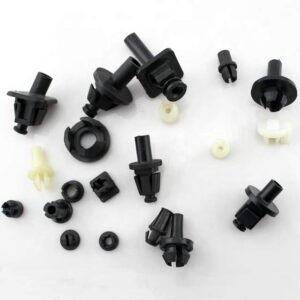
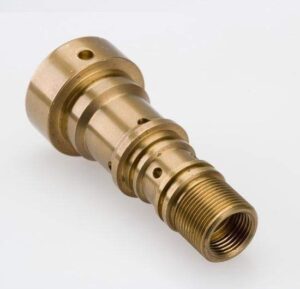
As the foundation of the automobile industry, auto parts are a necessary factor to support the sustainable and healthy development of the automobile industry. With the development of manufacturing industry, the quality of materials and the precision of parts have been greatly improved, but the early failure of automobile parts still exists. As a sustainable solution, 3D printing helps the automotive industry reduce its impact on the environment and move towards a more sustainable future. “Intelligent 3D printing systems, connected to digital supply chains and supported by materials science innovation, are ready to increase their share of global manufacturing. It will lead to less energy waste, better performance and more Short time to market. Ultimately, we will do manufacturing in a smarter way, using sustainable 3D printing technology to do better.
Practical applications of 3D printing in the automotive industry

Deutsche Bahn has completed the passenger test of Olli, the world’s first 3D printed IoT minibus. Olli was jointly developed by the well-known American 3D printing car company Local Motors and the information giant IBM. It uses a 3D printed shell and is equipped with the famous IBM Watson cloud computing platform. It has strong independent learning capabilities and can achieve complete autonomous driving.
Anhui Hengli Company uses SLS technology and plaster mold vacuum pressurized casting technology to achieve integrated manufacturing of bimetal composite engine blocks, changing the traditional mold opening and sand casting model. It has been successfully used in Chery Automobile, Dongfeng Motor, GAC, Quanchai and other companies.

 Deutsch
Deutsch Français
Français 日本語
日本語 Español
Español
